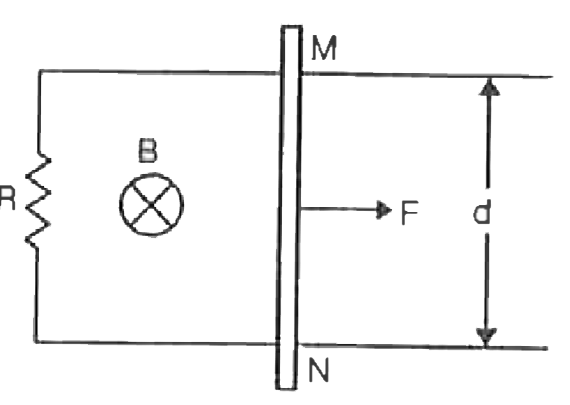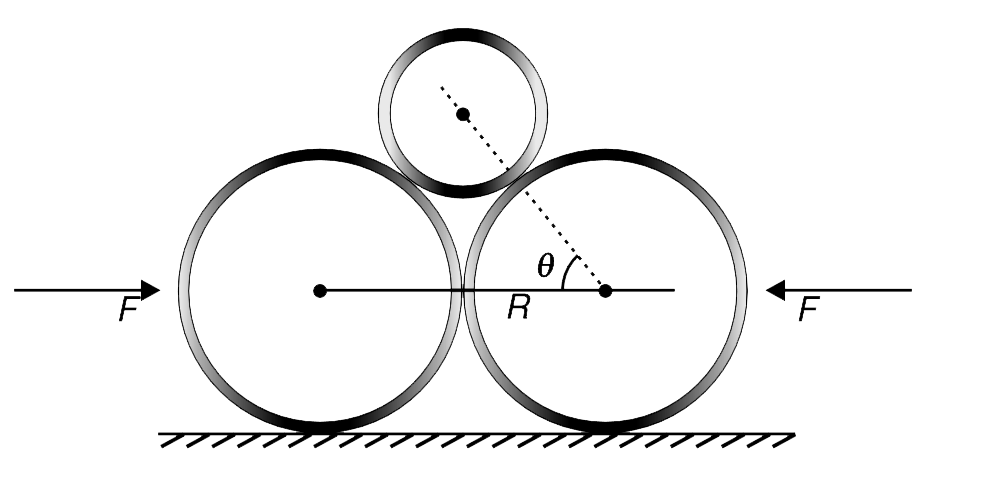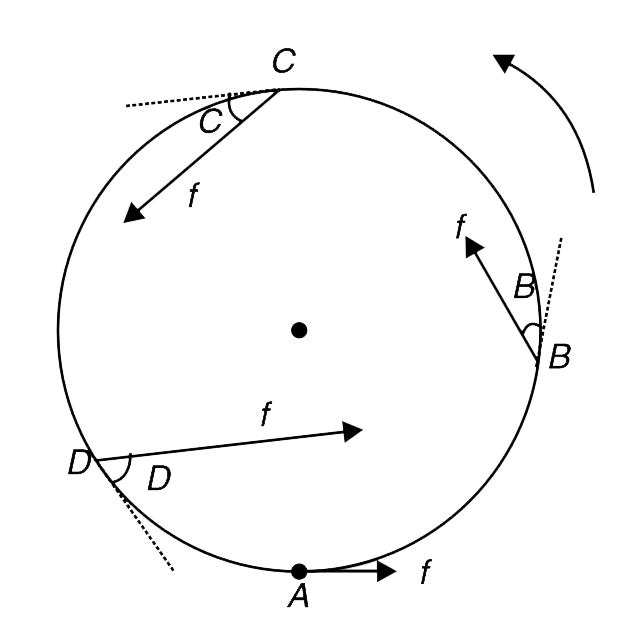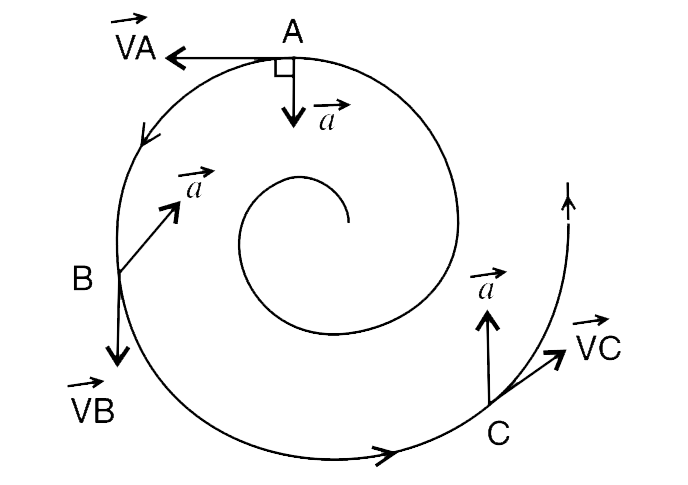Experiment shows that two perfectly neutral parallel metal plates separated by a small distance d sttract eachother via a very weak force, known as the Casimir force. The force per unit area of the plates, F, depends only on the Planck constant h, on the speed of light c, and on d. Which of the following has the best chance of being correct for F?
F=hcd2
F=hcd4
F=hd2c
F=d4hc
The correct Answer is:b
F=newtonm2
hcd2=joe–−sec(metresec)=1(metre)
=joulemetre=newton
hcd2=(hcd2)=1d2=newtonm2,HenceF=hc/d4
hdc=joule sec(metre)2(metresec)=newton−metre2sec2
d4hc=1(hcd4)=m2newton
Topper's Solved these Questions
- UNIT, DIMENSION AND ERROR ANALYSISBook:A2ZChapter:UNIT, DIMENSION AND ERROR ANALYSISExercise:Assertion Reasoning
Explore 16 Videos
- UNIT, DIMENSION AND ERROR ANALYSISBook:A2ZChapter:UNIT, DIMENSION AND ERROR ANALYSISExercise:NEET Questions
Explore 23 Videos
- UNIT, DIMENSION AND ERROR ANALYSISBook:A2ZChapter:UNIT, DIMENSION AND ERROR ANALYSISExercise:Erros Of Measurement
Explore 31 Videos
- THERMAL PROPERTIES OF MATTERBook:A2ZChapter:THERMAL PROPERTIES OF MATTERExercise:Chapter Test
Explore 30 Videos
- VECTORSBook:A2ZChapter:VECTORSExercise:Chapter Test
Explore 29 Videos
Similar Questions
The Casimir effect describes the attraction between two unchanged conducting plates placed parallel to each other in vacuum. The astonishing force ( predicted in 1948 by Hendrik Casimir) per unit area of each plate depends on the planck’s constant (h), speed of light (c) and separation between the plates (r).
(a) Using dimensional analysis prove that the formula for the Casimir force per unit area on the plates is given by F=khcr4 where k is a dimensionless constant
(b) If the force acting on 1×1 cm plates separated by 1μm is 0.013 dyne, calculate the value of constant k.
View SolutionTwo large metal plates with surface charge densities +σ and −σ are separated from each other by a distance of d. Find the force per unit area acting between them.
View Solution
Knowledge Check
The charges on two parallel copper plates separated by a small distance are +Q and −Q. A test charge q experiences a force F when placed between these plates. Now if one of the plates is removed to infinity, then the force on the test charge will become :
AF/2BFC2FDZeroTwo long conducting wires are placed parallel to each other at a distance d. Current carried by the wires is i1 and i2. If F is the force acting between them, per unit of length, then which of the following statments is true?
AF is proportional to i1i2BF is inversely proportional to dCF will be attraction if currents are in the same directionDF will be repulsive if currents are in the same directionA certain transmission line (very long) is constructed from two thin metal plates (parallel to each other) of width b, which are separated by a very small distance ‘h’ lt lt ‘b’ . The current travels down one strip and back along the other, and it is distributed uniformly over the surface of the plates as shown in figure. Neglect fringing field at ends of plates.

Capacitance per unit length of this combination isAinfiniteBε0h2bCεb2h2Dεbh
A parallel plate capacitor has two plates of area A separated by a small distance d. The capacitor is charged to a potential difference of V and the battery is disconnected. A metal plate with area A and thickness d2 is fully inserted between the plates, so that it always remains parallel to the plates.
(a) Calculate the work done on the metal slab while it was inserted.
(b) Does the two plates of the capacitor attract of repel the metal plate that is being inserted. Does the answer obtained in part (a) help you in answering this ?
View SolutionTwo long parallel horizonal rails , a distance d apart and each having a resistance λ per unit length are jointed at one end by a resitance R. A perfectly conducting rod MN of mass m is free to slide along the rails . A variable force F is applied to the rod MN , such that ,as the rd moves, a constant current i flows through R.
(a) Find the velocity v and the force F as function of the function of the distance x of the rod from R.

(b) What fraction η of the work done by F per second in converted into heat ?
View SolutionTwo identical smooth disc of radius R have been placed on a frictionless table touching each other. Another circular plate is placed between them as shown in figure. The mass per unit area of each object is σ, and the line joining the centers of the plate and the disc is θ
(a) Find the minimum horizontal force F0 that must be applied to the two discs to keep them together.
(b) Angle θ can be changed by changing the size of the circular plate. Find F0 when θ→0.
[use cosθ=1−θ22 and sinθ=θfor smallθ]
(c) Find F0 when θ→π2 . Explain the result .

View Solution(a) A car starts moving (at point A) on a horizontal circular track and moves in anticlockwise sense. The speed of the car is made to increase uniformly. The car slips just after point D. The figure shows the friction force (f) acting on the car at points A, B, C and D. The length of the arrow indicates the magnitude of the friction and it is given that ∠D>∠B>∠C. At which point (A, B, C or D) the friction forces represented is certainly wrong ?

(b) A particle is moving along an expanding spiral (shown in fig) such that the normal force on the particle [i.e., component of force perpendicular to the path of the particle] remains constant in magnitude. The possible direction of acceleration(→a)of the particle has been shown at three points A, B and C on its path. At which of these points the direction of acceleration has been represented correctly.

(c) A particle is moving in XY plane with a velocity . →v=4ˆi+2tˆjms−1 . Calculate its rate of change of speed and normal acceleration at t = 2 s.
View SolutionLinked Comprehension Type Based upon each paragraph, three multiple choice questions have to be answered. Each question has four choices: a, b, c, and d, out of which only one is correct For Problems 1-3 center is at Each side of a square has length 4 units and its (3, 4). If one of the diagonals is parallel to the line y x, then answer the following questions 1. Which of the following is not the vertex of the square? a. (1, 6) b. (5, 2) c. (1, 2) d. (4, 6) 2. The radius of the circle inscribed in the triangle formed by any three vertices is a. 2020V2 1) 2012 1) d. none of these 3. The circle inscribed in the triangle forme radius of the by any two vertices of the square and the center is b. 202 1) a. 2012 1) d. none of these v2012 1) For Problems 4-6 Tangents PA and PB are drawn to the circle (x 4) 4 from the point P on the curve y sin x, where A and B on the circle. Consider the function y f(r) represented by locus of the center of the circumcircle of triangle PAB. T answer the following questions
View Solution

